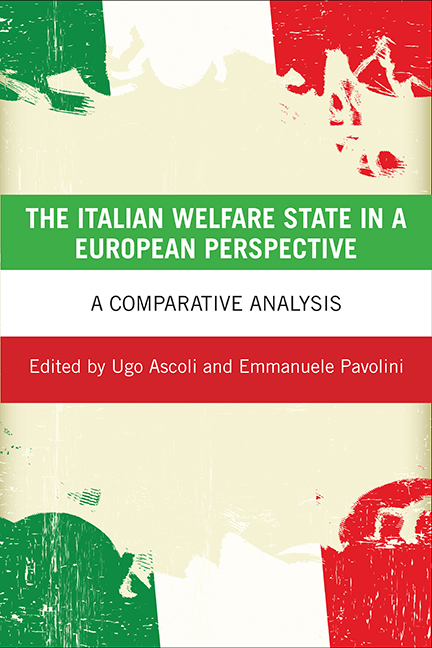Conclusions
Published online by Cambridge University Press: 08 March 2022
Summary
Introduction
This book has attempted to reconstruct how the Italian welfare state has changed over the past two decades, and is still changing quite rapidly during these years of economic crisis and austerity. The goals have been to describe these changes and how they have taken place, to interpret their direction and their effects in terms of outputs and outcomes, and to understand what the main factors and actors at the basis of changes have been.
The following sections summarise and generally interpret the results of our inquiry. The second section describes the trends of the last two decades of reforms. The subsequent two sections deal with the impacts of those reforms. The fifth section considers some of the potential factors that help understand the changes. The conclusions evaluate whether the transformations of the past 20 years have also induced structural change in the main traditional features of the Italian welfare state.
A quarter of a century of welfare reforms in Italy
The 1990s and the past decade
After the 1980s – a decade of limited reforms – the 1990s were years of significant paradigmatic change, while more parametric change came about in the 2000s. As regards pensions, two broad reforms (1992/93 and 1995) radically changed the previous system by transforming the functioning of public pensions (see Chapter Two). Both reforms had two goals, each of them related to functional and distributive recalibration: first, to reduce pension spending, given the particularly high level of expenditure and the financial crisis that hit Italy in those years; and, second, to reduce inequalities among beneficiaries in the functioning of the system.
The reforms provided for measures that caused drastic reductions in pension spending, especially in the near and distant future. The government also promoted transformation of the pensions system towards a multi-pillar one, paving the way for so-called ‘supplementary pensions’. In order to improve equity, public- and private-sector employees were obliged to contribute to the scheme in equal measure, while contributions by self-employed workers were increased. Pension coverage was also extended to workers on flexible contracts.
If the 1990s were a time of paradigmatic change, the 2000s were characterised by parametric changes prior to the crisis.
- Type
- Chapter
- Information
- The Italian Welfare State in a European PerspectiveA Comparative Analysis, pp. 327 - 360Publisher: Bristol University PressPrint publication year: 2015



